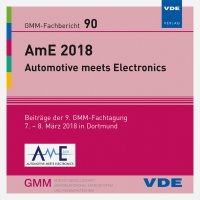Non-driving related tasks in highly automated driving – Effects of task modalities and cognitive workload on take-over performance
Konferenz: AmE 2018 – Automotive meets Electronics - 9. GMM-Fachtagung
07.03.2018 - 08.03.2018 in Dortmund, Deutschland
Tagungsband: AmE 2018 – Automotive meets Electronics
Seiten: 6Sprache: EnglischTyp: PDF
Persönliche VDE-Mitglieder erhalten auf diesen Artikel 10% Rabatt
Autoren:
Wandtner, Bernhard; Schmidt, Gerald (Opel Automobile GmbH, Rüsselsheim, Germany)
Schoemig, Nadja (WIVW GmbH, Veitshöchheim, Germany)
Kunde, Wilfried (Universität Würzburg, Germany)
Inhalt:
In highly automated driving, the driver is allowed to temporarily engage in non-driving related tasks (NDR-tasks). However, when reaching a system limit, the driver needs to take back vehicle control within a reasonable amount of time. Previous studies found impairments in take-over performance while engaged in NDR-tasks, but little is known about the impact of specific task characteristics. In the present driving simulator study 14 participants used a highly automated driving system on a motorway track and faced six critical take-over situations. Based on assumptions of Wickens’ multiple resource theory different variables were systematically manipulated: The demands of the NDR-task (modalities, cognitive workload) and the time budget of the take-over situation (6 vs. 8 s). Compared to an auditory task, take-over times tended to be longer for a visual-manual task, particularly when the task had a high cognitive load. Drivers did not brake faster, but stronger in the more time critical take-over situation. Further research is necessary to validate the results with a larger sample of participants and to extend the findings to other NDR-tasks and scenarios. Knowledge about the impact of different NDR-tasks provides possible approaches for adaptive HMI concepts or might help regulators making decisions on allowed NDR-tasks in automated driving.


